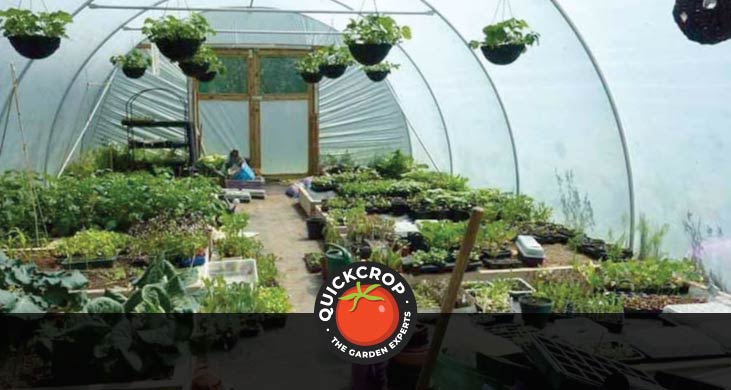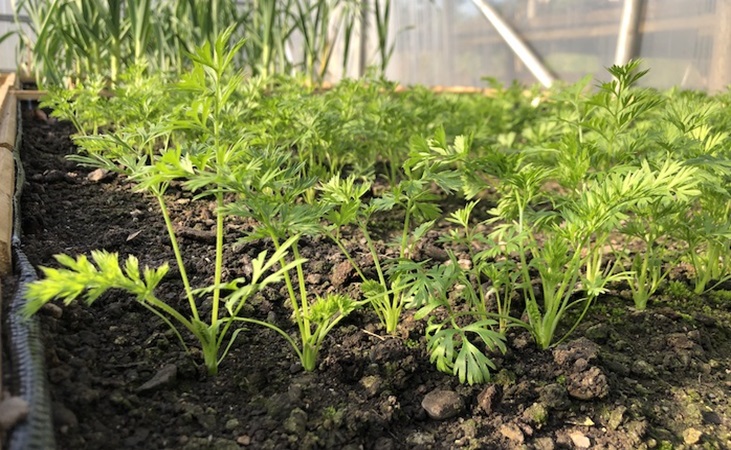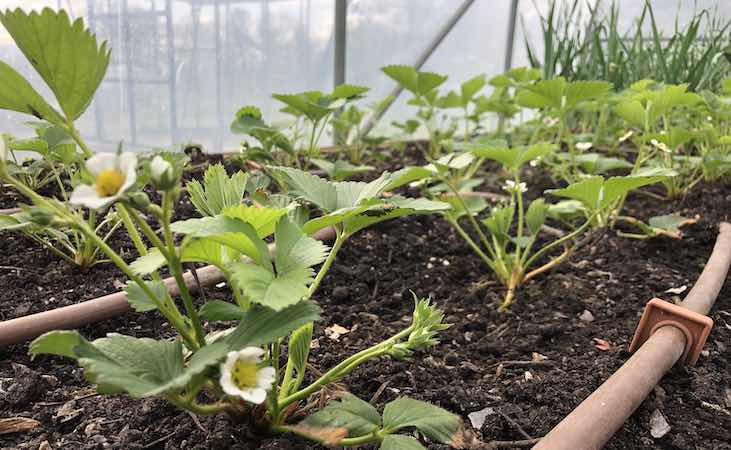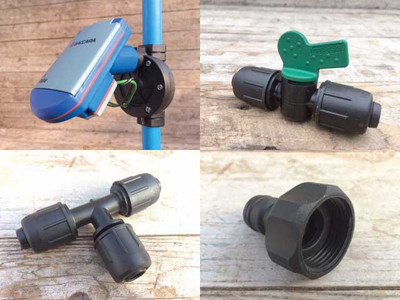A Beginner's Guide to Polytunnel Gardening

What is a Polytunnel?
A polytunnel is an elongated, semi circular-shaped tunnel made out of polyethylene. They come in a wide variety of sizes, and they can be something of a game changer in a mild, temperate or unpredictable climate - such that exists in Ireland and the UK.
The main purpose of a polytunnel is to create a sort of microclimate that maintains warmer growing temperatures than outdoors. This allows you to grow various fruit and vegetable crops even when they are out of season.
Polytunnels are also an excellent form of crop protection, protecting plants from cold, wind, rain and strong sunlight (by diffusing sunlight as it enters the tunnel).

Large Hobby Polytunnel (4.6m Wide)
View ProductAnother major benefit of having a polytunnel is that it is not a permanent structure, and can be moved about or taken down completely if need be. Smaller polytunnels or hobby tunnels can be used as a 'kitchen garden' for herbs and salads, and larger ones can be used for anything from growing entire vegetable crops to plant and flower nurseries.
Why Use a Polytunnel?
- A polytunnel will enable the gardener to grow warmth-loving fruit and vegetable plants that can otherwise struggle in our temperate climate.
- By optimising growing conditions, they can extend your growing season from 4-6 weeks at both ends of the traditional outdoor season.
- They allow you to start seedlings under cover before moving them outdoors when the threat of frost has passed.
- Polytunnels work out much cheaper to buy, maintain and install than greenhouses. The polyethylene/polythene material that is used for a typical polytunnel cover can last between 3 to 10 years depending on usage and site etc, before needing replacement.

What Crops Can You Grow in a Polytunnel?
Basically all kinds of flowers, fruit and vegetable plants can be grown inside the structure. 80% of all soft fruits on the market are grown in polytunnels.
Plants commonly grown in a polytunnel include:
- tomatoes
- strawberries
- potatoes
- cucumbers
- peppers
- salad greens
- radish
- carrots
- melons
- cauliflower
- lettuce
- chillis
- peas & beans
- cabbage
- oriental salads
- onions

Polytunnel Positioning
First off you need to think about positioning. Polytunnels need:
- Flat, even ground (although they can be place on slopes or inclines; up and down rather than across)
- Access to a decent water supply
- An area that receives plenty of sunlight.
Gardening in a Polytunnel
Most polytunnels are spacious enough for two rows of raised beds inside: this is ideal as you won't have to walk over good soil to tend plants. Use good quality soil (see the video above). Raised beds make it easy to maintain a good soil structure.
Try and alter your sowing dates to maximize your polytunnel's output, and to ensure there is always something to harvest.

Small Hobby Polytunnel (3.7m Wide)
View ProductAre Pests an Issue in a Polytunnel?
Polytunnels offer good protection for crops, but you can never be 100% pest free. As a preventative measure, keep your tunnel well ventilated and try to maintain a nice even temperature. Too humid an environment can be a breeding ground for pests and diseases. Water well but be careful not to overwater.
For more info on Polytunnel Growing, see our section of articles here.




